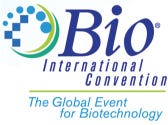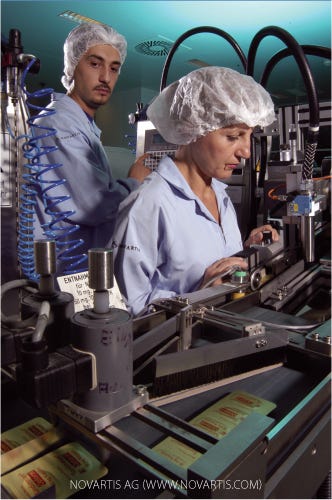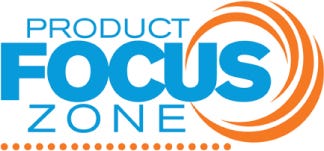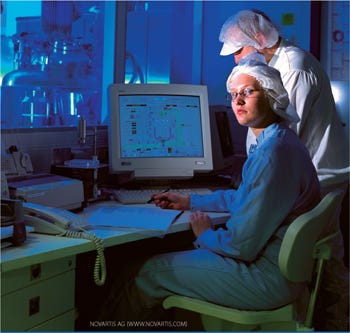March 1, 2009

As new medicines, vaccines, biomaterials, and biofuels move through development, companies often face some of their toughest hurdles in moving from benchtop to production-scale processes. These are not only technological, but as technology advances it becomes more difficult to find experienced talent to make use of it. Some regional endeavors, such as the National Biomanufacturing Centre in the United Kingdom and the Massachusetts Biomanufacturing Center in the United States are pooling skills and resources to help companies overcome the technical and workforce challenges in developing the biomanufacturing capabilities these new products require.
Emerging companies face tremendous obstacles in transitioning from research to development organizations, when bioprocess scale-up issues often take them by surprise. Few contract manufacturers specialize in helping small, early stage companies make such a transition because most prefer to focus instead on more mature and experienced clients that are, quite frankly, more likely to stick around. In the region where the biotechnology industry arguably began, a network of existing and new capabilities is being built to help emerging companies successfully transition from research to production, ultimately growing the local biomanufacturing industry.

NOVARTIS AG (WWW.NOVARTIS.COM)
Paul Vigeant, assistant chancellor for economic development in the SouthCoast Development Partnership, is presenting in a session on Manufacturing Biologics and Talent at the 2009 BIO International Convention. He says, “This session describes a public–private partnership among the Commonwealth of Massachusetts, the city of Fall River, the University of Massachusetts, a private development corporation, and the private sector to grow the biotechnology cluster in the SouthCoast region of Massachusetts. Attendees will gain insights about how to create and implement a technology-focused economic development strategy with application in the life sciences sector. They will learn about the process to build a broad coalition of business, political, and academic support for creation of a biomanufacturing facility, as well as each stakeholder’s investment in the deal.”
Vigeant adds, “In an increasingly competitive economic marketplace, access to information is critical. This convention, he says, will provide attendees with “the most current information about how to be competitive and succeed in that environment.”
Serving a Global Market
Not long ago, biopharmaceutical companies complained that manufacturing bottlenecks and capacity shortages were slowing drug development, delaying product commercialization, and increasing the costs of doing business. Corporate mergers, technological improvements, and the rise of Asian biotechnology answered the call to action, and now the world may even end up with excess biocapacity. Geographic and development-stage mismatches between manufacturing supply and demand could prevent the growing “glut” from shrinking costs after all. Modern biopharmaceutical developers face a whole new set of challenges compared with just five years ago. Keeping up with these developments is essential for decision-makers concerned with founding, funding, and growing successful biopharma enterprises.
Biodefense: Biotechnology’s growth is spurring major industry efforts to develop new, high-efficiency biomanufacturing platforms for biotherapeutics and vaccines to drastically reduce manufacturing scale-up and production times and costs. Recognizing that such systems are integral to responding rapidly to pandemic or biological threats, even the US government has become a driver of new biomanufacturing technology. In 2007, the Defense Advanced Research Projects Agency (DARPA) launched an ambitious program specifically aimed at developing ultrafast new biomanufacturing technologies. Its goal is to condense drug manufacturing timelines from months-to-years to weeks-to-months.
Specifically, the program calls for a system “capable of producing three million doses of GMP-quality vaccines or MAbs within 12 weeks.” This will involve high-efficiency expression systems, disposable bioreactor and processing systems that are easy to set up and take down, and rapid analytical methods to handle newly discovered pathogens. Biodefense preparedness is a global issue. The ability to manufacture biologics, flexibly, at greatly reduced time and cost could expand access to new biologics and vaccines throughout the world.
Patrick Lucy, a business leader for Dowpharma, is a presenter at a BIO International Convention session focusing on this program. “Manufacturing for biodefense is all about speed, quality, and scalability,” he says, “the very same needs for manufacturing commercial therapeutics and vaccines. The urgent need for rapid response in biodefense has pushed the industry to challenge the status quo in biomanufacturing which has ultimately taken us to new levels. This session will explore these advanced platforms and approaches and perhaps motivate the attendee to challenge the status quo in their own organization.”
RELATED SESSIONS AT THE BIO INTERNATIONAL CONVENTION
Manufacturing Drugs and Biologics Sessions: Monday 18 May 2009
A World of Biomanufacturing: Shortages or Global Glut?
Manufacturing Biologics — and Talent
Manufacturing Drugs and Biologics Sessions: Tuesday 19 May 2009
Biopharmaceutical Manufacturing Challenges: When Will Harmonization Resolve the Differences?
Approaches to Quality by Design Submissions for Biopharmaceuticals
Challenges in Stem Cell Manufacturing
Manufacturing Drugs and Biologics Sessions: Wednesday 20 May 2009
Transforming Current Biomanufacturing Models through Powerful Partnerships
Rapid Response: How Biodefense is Driving Transformation in Biomanufacturing
Drug Discovery and Development Sessions: Tuesday 19 May 2009
Changing the Game: Emerging Technologies for Next-Generation Protein Therapeutics
Industrial/Environmental Sessions: Wednesday 20 May 2009
Improving Drug Manufacturing and Helping the Environment through Controlled Enzyme Evolution
Food/Agriculture Sessions: Thursday 21 May 2009
Plant Science Technologies: Recent Advances that Will Change the World
For complete session information, visit http://convention.bio.org.
Lucy adds, “Given the unprecedented economic pressures, it is vital that companies use state-of-the-art technology to ensure that more molecules enter their pipeline faster with long-term manufacturability.”

IN THE BIO EXHIBITION
As of press time, the exhibit hall product focus zones were only beginning to fill up. For updates, visit the BIO exhibitor floor-plan at http://convention.bio.org/vr/shows/bio2009/start.html.
The Facilities Zone
Companies in this zone focus on the design of modern biotechnology manufacturing facilities to meet current and future demands. Biomanufacturing processes are increasing in complexity and demand strict environmental and processing controls. So facility design engineers must become much more familiar with current good manufacturing practice regulations as well as the technology behind manufacturing processes than ever before. Clean air quality, temperature, and humidity are highly regulated to protect sensitive equipment from contamination.
Companies in this zone offer the following products and services: design and build, safety, filtration, environmental Issues (green building and pollution prevention), apparel, portable clean rooms, and wipers/swabs.
Exhibitors (as of 1 February 2009)
Air Products & Chemicals, Inc. (Booth #6127) and Kowa Company Ltd. (#6227)
Regulations Drive Innovation: The FDA’s recent initiation of a pilot program for quality by design (QbD) submissions for biotech products has been viewed positively in general, but it has also generated concern regarding the exact nature of submissions that the FDA is expecting. Companies want to know what kind of regulatory relief might be possible with submission of QbD, design-space, and risk-management documents. Also, standards used for manufacturing quality as well as chemistry, manufacturing, and control data are applied differently among the major pharmaceutical regulatory regions (e.g., the United States, European Union, and Japan). The International Conference on Harmonisation of Technical Requirements for the Registration of Pharmaceuticals for Human Use (ICH) as seen quite a bit of success as an initiative to find common ground among those differences. With industry participation as well as that of government representatives, ICH is finding ways to make the global pharmaceutical industry work better to serve public health.
IN THE EXHIBIT HALL
As of press time, the exhibit hall product focus zones were only beginning to fill up. See the BIO exhibitor floor-plan in the Introduction section of this supplement for more information.
The Bioprocess Zone
The process of developing and manufacturing biotherapeutics can be divided into upstream and downstream processing. Exhibitors in this area have the technologies driving these processes including in the following: bioanalytical methods and assay development; contract services and outsourcing; drug delivery; fermentation and cell culture; formulation, fill, and finish; information technology; manufacturing; regulatory compliance; separation and purification; single-use technologies; and validation and quality issues.
Zone Exhibitors and Booth Numbers (as of 1 February 2009)
Ajinomoto 4806 ALMAC GROUP, LTD. 5604 American Peptide Company, Inc. 5317 American Plastics Technologies 5620 Apothecaries Clinical Research 4701 Aragen Bioscience 4825 Artelis 5127 Asahi Glass (ASPEX) 5019 Asahi Kasei Medical 5227 AUTM 4703 Avecia Biologics Ltd 5325 Azopharma Product Development Group 5600 Bachem Americas, Inc BD Biosciences — 5313 Advanced Bioprocessing 5614 Ben Venue Laboratories, Inc. 4810 BioInvent 4727 Biologics Process Development, Inc. 5516 BioProcess International 5213 Bioprocessing, Inc. 5521 Bio-Rad Laboratories 5415 Career Solutions International 5015 Catalent 4924 Chempacific 5217 Cinvention AG 4823 CMC ICOS Biologics 5418 Competitive Technologies, Inc. 4919 Contract Pharma Magazine 4711 Cook Pharmica LLC 5021 Cytovance Biologics 5513 Diosynth Biotechnology 4923 Do-Coop Technologies 5425 Dr. Reddy’s Laboratories 5525 DSM 5405 Eden Biodesign Ltd 4814 Enzon Pharmaceuticals, Inc. 5110 EuroFins Scientific 5211 Eurogentec 5316 Formatech, Inc. 5308 Genelogic-OcimumBioSolutions 4817 Health Protection Agency 4917 HollisterStier Laboratories 4805 Hospira 5122 HT Genomics 4808 IDEM 5324 Intercell AG 4705 Jubilant Organosys 4905 Jubilant Organosys 4911 Lampire Biological Laboratories, Inc. 4717 Lonza 5515 Meissner Filtration Products, Inc. 4800 Molecular Profiles, Ltd 5519 National Institute of Standards & Technology 4613 Natrix Separations 5413 NCSRT 5009 Neuland Laboratories Ltd. 5320 Opportunity Houston 4721 Pll 5318 QSV Biologics 5027 Rees Scientific Corporation 4804 Richter-Helm 5222 Schwartz Communications, Inc. 4715 Selexis 5226 Sentry Logistic Solutions, Inc. 5025 Solvias Inc 5514 SouthernBiotech 4802 SPEX SamplePrep LLC 4709 Stanbio Life Sciences 5609 Sterigenics 5310 TechniKrom, Inc. 5219 Tissue Culture Biologicals 4910 Upfront Chromatography 5123
The Cutting Edge
Translating the promise of stem cells into clinical therapies for conditions such as myocardial infarction, diabetes, Parkinson’s disease, and spinal cord damage is limited by current cell culture technology, which yields only small batches of cells that treat a limited number of patients. Realizing the potential of stem cells will require the capacity to process high-quality cells that are orders of magnitude greater in number. This will require technologically advanced production facilities and unique business models. Stem cell biomanufacturing has become a priority for many countries. In particular, federal funding has become available in Ireland, with additional interest expressed by the European Union to create consortia of industrial and academic representatives focused on stem cell translation.

Katharine Montgomery at the Georgia Institute of Technology is organizing a session on this topic at the 2009 BIO International Convention. “The potential impact of stem cells on public health is tremendous,” she says, “but contingent on the development of innovative manufacturing and commercialization models. While stem cell-based therapies are being investigated at the academic and clinical levels in limited studies, timely industry involvement is pivotal. This type of session allows the necessary convergence of companies with distinct intellectual property rights to interact to propel forward stem cell-based therapies in the coming decade. The audience will take away an understanding of the current state of the art in stem cell bioprocessing, including the achievements of traditional cell culture processing, the technical challenges unique to stem cells, and the quality control approach regulatory agencies expect.”
The timing is ideal, she adds. “With the hope that the new US government administration will increase federal funding for stem-cell research, stem-cell-based technologies and therapies should be developed more rapidly and companies need to be preparing for manufacturing scale-up.”
Jon A. Rowley, director of cell therapy R&D at Lonza, is a presenter at Montgomery’s session. He says, “This session should highlight the cost drivers of cell manufacturing for both autologous and allogeneic product strategies, where the current processing bottlenecks are, and what technology challenges lie ahead that will help control the COGS for these inherently expensive products. Attendees will come away with an understanding of the challenges and opportunities that the cell therapy industry faces as it transitions from the ‘art of cell culture’ to a more rigorous ‘bioprocess engineering’ discipline.”
The Next Steps in Bioprocessing: Biotechnology was founded on revolutionary technologies to make human-derived biologics. Today, proteins and alternative therapies such as monoclonal antibodies and derivatives, fusion proteins, and vaccines represent the fastest-growing therapeutic category. There are specific challenges in making them and improving their quality, productivity, and therapeutic effectiveness. Technologies currently being explored include a controlled protein synthesis platform that does not require cells for protein expression; direct discovery from human blood of rare, potent antibodies; microparticle-based, broad-spectrum vaccines and immunostimulants; and an integrated system enabling rapid antibody discovery, maturation, and production using a single platform.

NOVARTIS AG (WWW.NOVARTIS.COM)
Next-generation proteins present unique challenges. Either they do not occur in nature or they may be very rare or nonnative (unlike cytokines, for example). These proteins require novel methods of biomanufacturing. Selection of appropriate protein candidates can be a lengthy process requiring significant resources. Technologies that represent paradigm shifts in drug development but can be readily integrated into current systems would be of great value to drug companies and of course, patients.
An example would be to make protein therapeutics without the use of whole cells for expression; so far, such technology is only seen at research scales. Only one protein would be produced at a time, greatly simplifying downstream processing and improving quality through better protein folding and reduced aggregation, as well as eliminating the need for cell line development. This goes against conventional dogma.
Bruce Keyt, chief scientific officer at Trellis Bioscience, Inc., is presenting in a session on these topics at the 2009 BIO International Convention. “With monoclonal antibodies reaching $30 billion in sales over the next few years,” he explains, “companies (especially big pharma) are looking for the most robust antibody discovery technologies. This session will introduce some of the latest and most advanced approaches to monoclonal antibody discovery and production under development, as well as other recent advances in the development of next-generation therapeutics.”
Bill Newell, CEO of Sutro Biopharma will also present at the same session. “If you want to see where we’ve been in terms of product discovery, development and manufacturing, then you’re really just looking in the rearview mirror,” he says. “If you want to know where we as an industry are going in terms of the creation of innovative new therapeutics as well as better ways of producing them, then this panel is a must-see.”
You May Also Like





